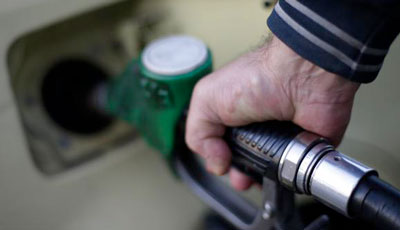Biggest Oil Buyers Pick Themselves as Winners From OPEC Meeting

-
OPEC to meet Dec. 4 in Vienna to discuss oil production target
-
South Korean refiner sees `best time ever’ as buyer amid glut
Oil buyers in Asia are sure of one thing as OPEC prepares to meet: They’ll emerge as winners from the group’s rift over production.
Members of the Organization of Petroleum Exporting Countries will gather Dec. 4 in Vienna, where Iran has said it will announce plans to boost production by 500,000 barrels a day. That may further lift the 12-member group’s output, which has exceeded its target for 17 months. The increase in volumes would exacerbate a global glut and benefit the biggest oil-consuming region’s refiners, which are seeking cheaper sources of crude.
OPEC is forecast to stick with its strategy of defending market share by maintaining output and driving down higher-cost production elsewhere, according to analysts and traders surveyed by Bloomberg . That’ll leave members including Saudi Arabia free to continue pumping even amid calls from Iran to make room for its extra supply after international sanctions over its nuclear program are lifted.
“This is probably the best time we’ve ever had as a buyer,” said Kim Woo Kyung, a spokeswoman for SK Innovation Co., South Korea’s largest refiner. “We are enjoying an overflow of oil.”

OPEC has exceeded its output target of 30 million barrels a day since June 2014 as it pumps near record amounts of crude, boosted by increases from its biggest members, Saudi Arabia and Iraq. The group’s strategy to defend market share has helped lift refining margins for Asian processors, who have been treated to a steady flow of cheap cargoes from the Middle East to Mexico, Nigeria and Russia.
Profits from turning crude into naphtha, which is used to produce gasoline as well as petrochemicals, surged to $9.42 a barrel this month, the highest level since at least May, data compiled by Bloomberg show. Purchasing costs for refiners have slumped. Japan, Asia’s second-biggest oil consumer, spent an average of $51.22 a barrel in September for supplies, down from $113.47 in January 2014, according to data from the nation’s Ministry of Finance.
While oil’s decline has spread to fuels such as gasoline, the pace of crude’s slide has been faster. Spot prices of the motor fuel loading from Singapore have fallen about 37 percent over the past year, compared with a slump of about 45 percent in Dubai crude, a benchmark for shipments to Asia. Additionally, cheaper fuel has boosted consumer demand for the supplies that refiners sell.
“Refining margins in Asia have stayed very strong, certainly much stronger than in 2014, largely because feedstock prices have dropped significantly,” Victor Shum, a vice president at IHS Inc., an Englewood, Colorado-based industry consultant, said by phone from Singapore.
Brent crude, the benchmark for more than half the world’s oil, has dropped about 21 percent this year after falling by almost 50 percent in 2014. Futures in London traded near $45 a barrel on Friday. West Texas Intermediate, the U.S. marker, was near $43 a barrel, down about 42 percent from 12 months earlier.

The Asia-Pacific region will consume 31.87 million barrels a day of oil in 2015, exceeding demand of 31.28 million barrels from the Americas, the International Energy Agency said in a report on Nov. 13. China, India, Japan and South Korea will be among the biggest users of oil, according to the Paris-based IEA.
“For six months to a year, I see markets flush with supply,” said Naveen Kumar, general manager for international trade and supplies at Hindustan Petroleum Corp., an Indian state-run processor. “As a refiner, low crude prices are benefiting us, so we would continue to hope for prices to remain low.”
Oil prices may drop to as low as the mid-$20s a barrel unless OPEC takes action to stabilize the market, Venezuelan Oil Minister Eulogio Del Pino said on Nov. 22. The Latin American nation and Algeria are among OPEC states most affected by crude’s slump and have long urged fellow members to curb output. Saudi Arabia, the world’s largest crude exporter, led the group to switch its strategy in November 2014 to focus on pressuring competitors.
“It is obvious that everyone will continue with their output because they have to sustain their economies,” said H. Kumar, managing director of India’s Mangalore Refinery & Petrochemicals Ltd. “If they reduce, their revenues will come down to that extent. So, this era of everyone sustaining output will continue and this is good for refiners.”
Source: Bloomberg – Biggest Oil Buyers Pick Themselves as Winners From OPEC Meeting




























